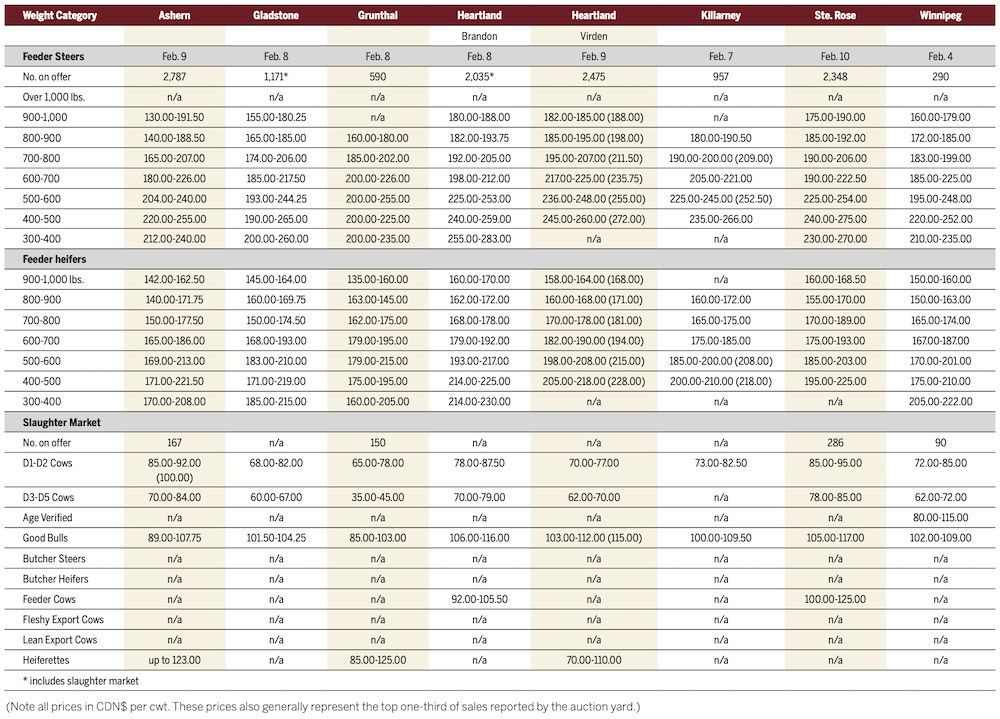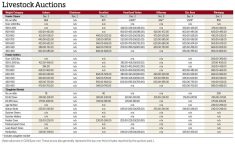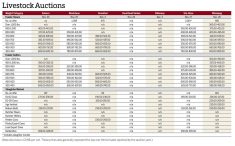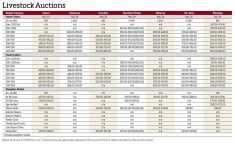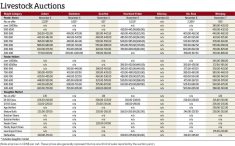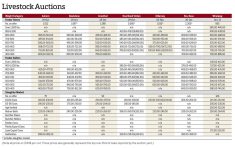Manitoba cattle auctions were busy during the second week of February, with slaughter cows and lighter-weight feeders seeing solid demand. More strength is expected in the next few months, although high feed costs and transportation issues were being followed closely.
While the numbers moving through the rings were relatively solid, they were still below what would normally be moving at this time of year.
“This is the least amount of cattle that I’ve ever seen in Western Canada for sale at this time of year,” said Brennin Jack, manager of Heartland Livestock Services at Virden. He expected that tightness to be even more pronounced by March or April, which would be especially supportive for lighter cattle suitable to go out on grass.
Read Also

Riding market swings can add farm profit
Regular price trends in the grain market can help farmers pinpoint how and when to sell their grain with more confidence, analyst says
“I think things will get really wild here,” said Jack. He noted that six-weight steers, currently hitting strong prices in the $235-per-hundredweight area, could be as high as $270 to $280/cwt by April.
While declining feed stacks were bringing cattle to market now, “if you can roll the dice and hold them (until later in the spring), I think it will really pay off.”
Tight feed supplies were limiting background operations from buying cattle for the time being, he said, but when they do come to market, the short cattle supplies and large amount of buyers at that time should boost prices.
“There’s no real extra feed around for these guys to be buying the cattle now to put on grass, so they’ll have to buy them as they come,” said Jack. While there won’t be any actual green pastures until later in May or June, the buying will have to start in April, as Jack expected there would be no cattle around by May.
“They’ll just bite the bullet and start buying cattle,” he said, noting those cattle will be fed hay until they can go out on grass — a very expensive prospect.
For the heavier cattle, prices were a little softer during the week, as the high cost of gains and a strong Canadian dollar weighed on prices.
On the butcher side “cows are starting to blast off too,” Jack said. He noted more cows than normal were moving back in the fall, due to the drought and feed shortages, which means the numbers are down now. He expected prices, already hitting the $80-$90/cwt range in some cases, would likely near the $100 level soon.
Demand was coming from all sides, he said, with cattle moving east, west and south. While cross-border transportation issues were occasionally causing delays, “the trucks that can go south are going full out,” he said.


